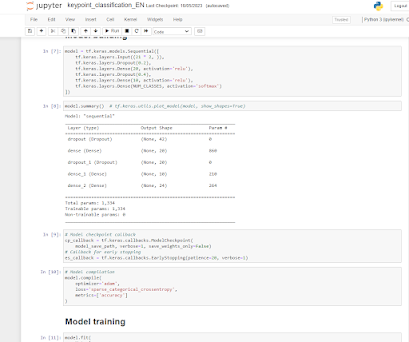FYP2_WEEK 3 (DESIGNING MACHINE LEARNING MODEL)
During week 3 of the project, my focus shifted towards the design of the Artificial Neural Network (ANN) model for the Malaysian Sign Language Recognition System. To accomplish this, I made the decision to utilize an ANN as the machine learning model, which is illustrated in the provided image. The ANN architecture encompasses several key components, including an input layer, two hidden layers, and an output layer.
The input layer is composed of 42 neurons, which receive the relative x and y coordinates of the 21 keypoints extracted from the MediaPipe hand landmark model. These coordinates serve as the fundamental input data for the ANN model. Moving on to the hidden layers, the first hidden layer consists of 20 neurons, while the second hidden layer is comprised of 10 neurons. Both of these hidden layers employ the Rectified Linear Unit (ReLU) activation function, a non-linear function that aids in capturing complex patterns and relationships within the data.
The output layer of the ANN model is designed with 24 neurons, corresponding to the total number of Malaysian sign language alphabets that the system aims to classify. Each neuron in the output layer represents a specific alphabet category. The purpose of the output layer is to generate predictions for the input data and assign them to the appropriate alphabet class.
To facilitate the design process of the ANN model, I utilized a web-based application called Jupyter Notebook, along with the Python programming language. These tools provided a suitable environment for implementing and fine-tuning the ANN architecture for the Malaysian Sign Language Recognition System.


Comments
Post a Comment